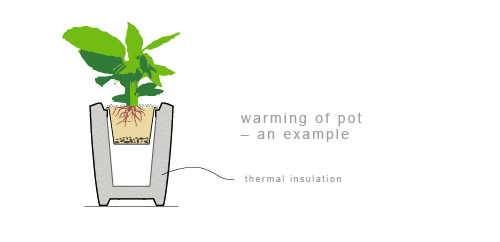garden flowerpots
If you use flowerpots outdoors, remember to protect them against a damage caused by freezing water. Water during freezing and changes in the ice expands by about 10% - trapped in a closed space it exerts a huge pressure on its walls. To avoid such a situation, the holes must be made in the bottom of the pot because water need a way to escape. Should be only three 6mm diameter ring-shaped holes drilled in the lowest part of the pot's bottom. Use a standard drill, which is used for drilling metal. You can do it on yourself or ask for during placing an order. If plants are planted in additional container the same holes should be done in them. To facilitate garden flowerpots drainage, put a few centimeter thick layer of gravel on the bottom of the flowerpots and cover it with a piece of fabric to avoid clogging of spaces in gravel layer. For drain can be used gravel, claydite, or small stones. In this way the holes will not be clogged and excess water can freely flow out.

If the garden flowerpots are left outside in the winter, in some plant species there is a danger of freezing roots in strong frosts. In this case, during planting plants put inside the walls of the flowerpot insulating layer, for example made of polystyrene or bubble wrap. It should have a thickness of about 10 centimeters.

If plants planted in containers are large and branchy, garden flowerpots can be overturned by the wind. This can be prevented by placing inside on the bottom of the flowerpot the additional load in the form of for example stones, sandbags, etc.

For an elegant look soils in the flowerpots may be covered with a decorative layer of gravel, pebbles or bark. In the case of garden flowerpots also reduce weed growth and prevent drying out of the soil. When applying the containers its edges are masked by the decorative layer and completely invisible.






